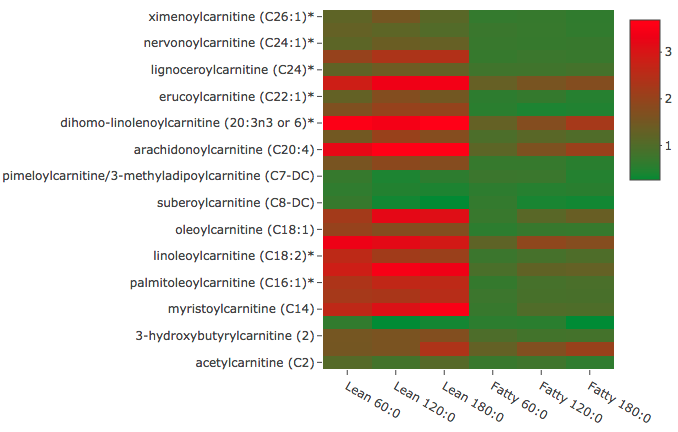Metabolic Profiling of Steatotic Human Livers during Ex-Vivo Normothermic Machine Perfusion
1Transplant Surgery, Massachusetts General Hospital, Boston, MA, 2Center for Engineering in Medicine, Shriners Childrens Hospital, Boston, MA
Meeting: 2019 American Transplant Congress
Abstract number: B23
Keywords: Lipids, Liver preservation, Machine preservation
Session Information
Session Name: Poster Session B: Ischemia Reperfusion & Organ Rehabilition
Session Type: Poster Session
Date: Sunday, June 2, 2019
Session Time: 6:00pm-7:00pm
 Presentation Time: 6:00pm-7:00pm
Presentation Time: 6:00pm-7:00pm
Location: Hall C & D
*Purpose: Nearly 40-60% of discarded livers are due to steatosis because of poor recovery from ischemia-reperfusion injury and compromised post-transplant function. We evaluated steatotic (ST) and nonsteatotic (NST) discarded human donor livers during normothermic machine perfusion (NMP), including metabolic profiling, to identify targets for improving transplantability of steatotic livers.
*Methods: 5 ST and 3 NST human donor livers declined for transplantation, were dual perfused for three hours at 37°C. Perfusion hemodynamic data was recorded and perfusate samples and liver biopsies taken hourly. Metabolomic analysis was performed via ultrahigh performance liquid chromatography-tandem mass spectroscopy (Metabolon, Durham, NC).
*Results: ST livers cleared lactate significantly more slowly than NST livers. Perfusate glucose levels of ST livers were significantly higher than NST livers. In ST livers, reduced glutathione levels were decreased at 1, 2, and 3h. NADH levels were much lower at 1h, although they recovered at 2h and 3h, but NAD/NADH precursors stayed low and degradation molecules remained high, while NST livers maintain glutathione and NADH levels. N-acetylcysteine levels were significantly lower in ST compared to NST livers over 3h. Whereas long-chain fatty acid acylcarnitine molecules increased over time in NST livers, they actually decreased in ST livers (see figure), and carnitine levels decreased more in ST than NST livers. Docosahexaenoic acid (DHA) decreased in both groups at 1h, recovering at 2 and 3h in NST but remaining low in ST.
*Conclusions: Metabolomic analysis of steatotic and non-steatotic livers suggest that ameliorating oxidative stress, and supplementing nicotinamide precursors and carnitine may help ST livers clear lactate and mobilize fatty acid for energy production. Addition of omega-3 fatty acids such as DHA may improve lipid metabolism and recovery from IR injury. These are being tested in a rat fatty liver model and metabolomic analysis for additional targets continues.
To cite this abstract in AMA style:
Raigani S, Karimian N, Huang V, Geerts S, Nagpal S, Uygun K, Yarmush M, Yeh H. Metabolic Profiling of Steatotic Human Livers during Ex-Vivo Normothermic Machine Perfusion [abstract]. Am J Transplant. 2019; 19 (suppl 3). https://atcmeetingabstracts.com/abstract/metabolic-profiling-of-steatotic-human-livers-during-ex-vivo-normothermic-machine-perfusion/. Accessed December 20, 2025.« Back to 2019 American Transplant Congress

